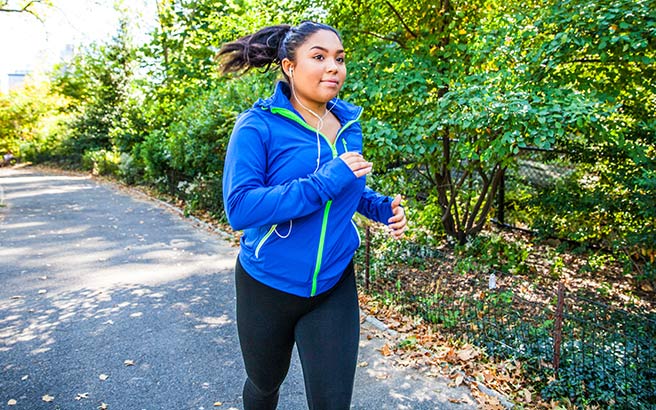 With our gyms, pools and sport centres closed, lockdown has spurred many of us in the UK to take up running to keep fit. But getting going or making it a long-term habit can seem daunting. Our Health Promotion Officer, Sidonie Sakula-Barry, shares her tips on completing the Couch to 5K challenge.
With our gyms, pools and sport centres closed, lockdown has spurred many of us in the UK to take up running to keep fit. But getting going or making it a long-term habit can seem daunting. Our Health Promotion Officer, Sidonie Sakula-Barry, shares her tips on completing the Couch to 5K challenge.
At the moment, we’re limited in the types of exercise we can do, but it’s important to be physically active to maintain a healthy weight and protect ourselves against cancer. Running is a great way to be physically active because it’s available to most people, it’s free, and needs limited equipment or specialist clothes – some good running trainers will do. During lockdown, it is also a chance to get out of the house and clear your mind – running can help with stress and anxiety.
Couch to 5K
The Couch to 5K app is a nine-week programme to get you running for 60 seconds to a full 30 minutes. It doesn’t focus on your speed or distance; it simply measures the amount of time you’ve run, as it’s all about endurance.
The programme has three runs a week, for around 20 to 30 minutes each time. It works for total beginners because each week builds up gradually. At first, the ‘runs’ are a combination of walking and short bursts of running, but by the end of week five, you’ll be running for 20 minutes straight.
I started back in January as part of a New Year health kick – and I was almost at the end of my challenge when lockdown started – but that didn’t stop me. Running is something I’ve never particularly enjoyed in the past, but having been a complete novice and now regularly running three times a week, I highly recommend the programme to get you going and achieving that 5K goal. Here are my tips to help you get into it.

Follow the programme
Many people feel that they can start halfway through the programme, as they might not feel challenged in the first couple of weeks. But if you’re a beginner I strongly recommend you start from the beginning, whether you feel you can do more or not. Though running for 60 seconds might seem easy, it’s getting your body used to running so that you don’t get injured. The programme will challenge you when it needs to.
Run at scheduled times
This will make it easier to keep it up. Maybe you run first thing in the morning, just before lunch or at the end of the working day – set a reminder to help you keep to your schedule.
Warm up
You might not feel that you need a brisk five-minute walk at the beginning – but trust me, the worst stitches I get are when I don’t warm up properly.
Start with someone
Some light social pressure can help you keep to the programme. I started with a group at work so we would all motivate each other. During lockdown, you might want to pair up with someone in your home – or you can meet someone else for a socially distant run. It’s important however to make sure you’re running at your own pace – whether you need to go faster or slower than your partner. If you don’t have someone appropriate to run with, you can just remotely motivate each other.
Do at least two runs a week
The programme calls for three runs a week but if you can only manage two then this is OK – especially for the first four weeks when each run is the same. From week five, it’s best to do every run as the duration of running starts to increase (quite dramatically!).
Breathe through your stitch
Sometimes you’ll have a good run and other times you’ll run the exact same amount and get a stitch. Slow down (this is endurance not a speed race) and breathe out all the air from your stomach. Take a deep breath filling up your stomach and repeat.
Remember to stretch
It will hurt if you don’t.

